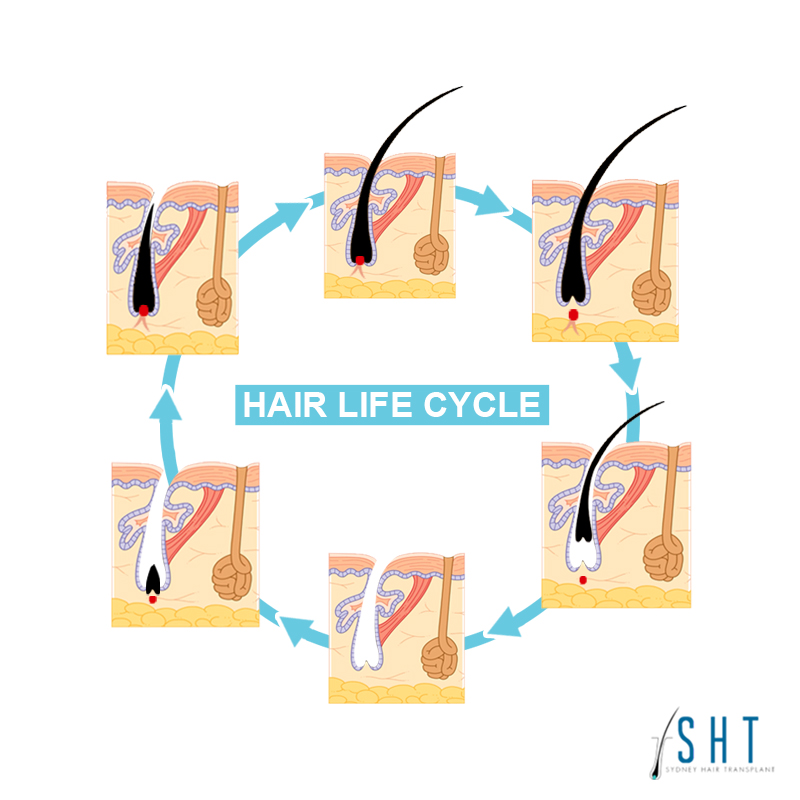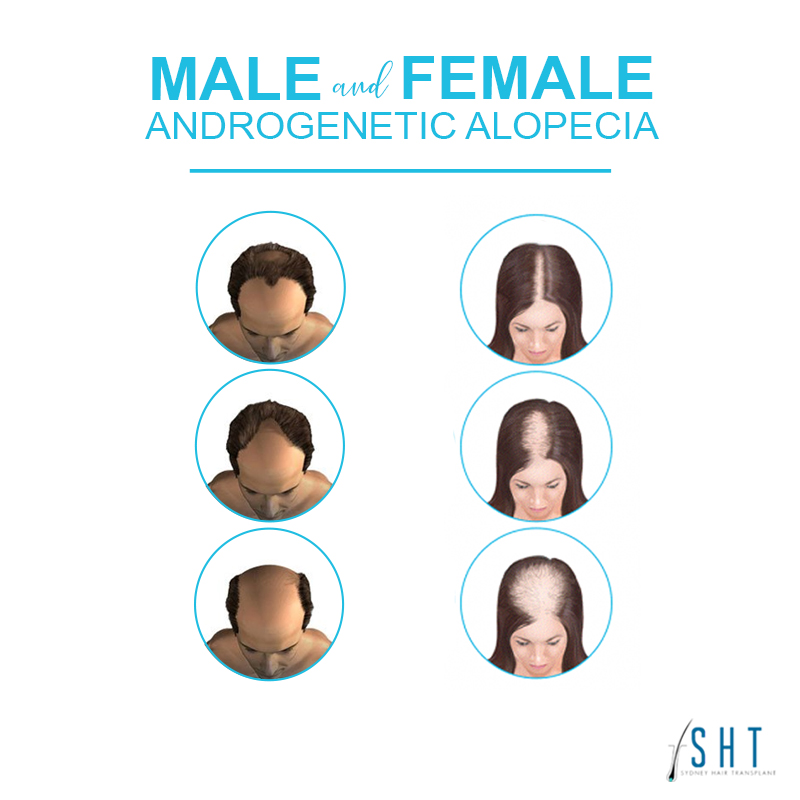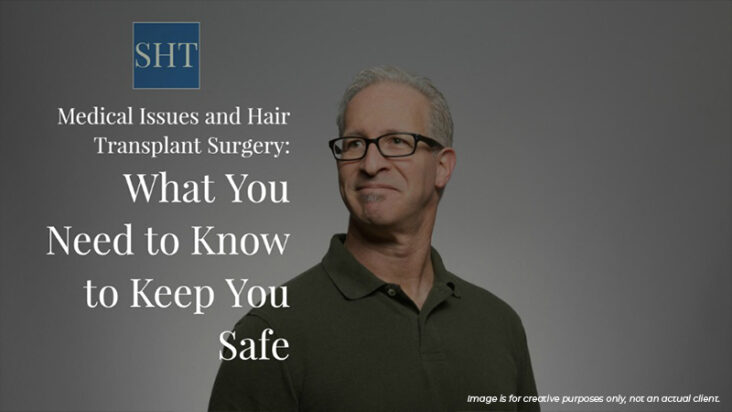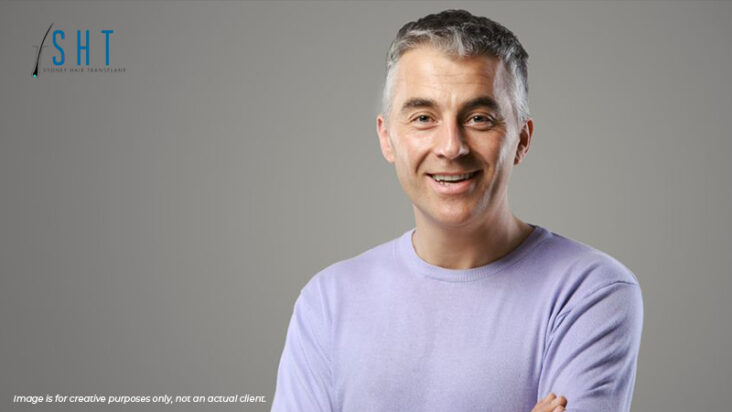Updated : October 31, 2019
Hair loss can take different forms in men and women. Therefore, treatments also vary to suit each patient’s needs. Hair transplant is one of those that can be customized accordingly, especially when addressing male and female hair loss. Here’s how the process differs for men and women.
Hair loss in men and women
Androgenetic alopecia is a genetic condition that affects males and females. The reasons may be similar, but it progresses differently.
Both male and female hair loss stems from an increased sensitivity to male sex hormones. Testosterone, which is also present in specific amounts in females, becomes dihydrotestosterone or DHT when it comes in contact with a particular enzyme. DHT is the culprit behind male pattern hair loss even though it is said to possess specific beneficial effects on other parts of the body.
Androgenetic hair loss for both sexes is defined by a genetically determined shortening of the hair’s growth (anagen) phase. It also takes a lengthier time when hair sheds and the start of another anagen phase. So, in the course of the normal growth cycle, it takes longer for hair to start growing back.
Androgenetic hair loss is also accompanied by follicular miniaturization. It is when the hair follicle shrinks, resulting in shorter, thinner hair shafts.

It is in the pattern that the hair loss progress that men and women differ. Guys start to lose it from their front hairline. It starts to thin and regress towards the center of the head, forming an inverted M or a U. For women, hair loss begins at the center part of the hairline going outwards.
The pattern in which hair loss progress is a key characteristic that distinguishes male and female pattern baldness. In men, it starts above the temples as the hairline recedes to form an “M” shape eventually. The hair at the top of the head also thins out, which usually progress to baldness. In women, androgenetic hair loss begins with gradual thinning at the part line, which is followed by increasing diffuse hair loss that radiates from the top of the head. Frontal hairline recession is rare in women, and women also rarely go bald.

Male Hair Transplant
Considerations
Whether you are financially and psychologically ready for surgery, there are other considerations your surgeon must take.
As an initial step, they will determine if hair loss progression has run its course before hair transplant can be done. There is no universal age when hair loss stops. The amount and rate of hair thinning depend on several factors (e.g., diet, environment, a person’s health in general). Genetics also determines when and how much hair a man will lose.
If a patient jumps the gun prematurely by undergoing hair surgery much early on, then hair loss might still progress. So a man could end up with a restored hairline but is eventually left with a bald center.
Hair loss medications maintained before the surgery would still be continued even after the procedure. This is to prevent hair loss from worsening or control it entirely.
The procedure
A male hair transplant is done by removing donor grafts at the back of the head since this area is often unaffected by the condition. There are two techniques in doing this, the FUT (Follicular Unit Transplantation) and FUE (Follicular Unit Extraction). FUT, also known as the “strip method,” involves the removal of a piece of the scalp which contains the donor graft. This is more invasive, but it promises better yield because it is less traumatic to individual hair follicles. FUE, on the other hand, is a newer technique which uses a special tool that acts as a punch to remove individual grafts directly from the scalp.
Female Hair transplant
A lot of men may make great candidates for hair transplant, but this isn’t necessarily the case for women. As mentioned earlier, the donor areas for men are found at the back of the head. It is called a “stable site,” which means that it is not affected by DHT. In female pattern baldness, the same areas are usually unstable. These areas are also thinning, just like the other areas of the head.
Therefore, if you remove hair from these areas and transplant them to thinning areas, they would eventually fall out. Any surgeon who attempts to transplant hair from an unstable site is unethical and is only taking advantage of the patient.
What is the goal of treatment for female hair transplant?
Unlike men, the frontal hairline in females remains unaffected since their hair loss takes on a more diffuse pattern. Hair transplants for this group are not aimed at framing the face but restoring volume from the top and the back. FUE is often the technique of choice for such cases, although some clinics prefer the strip method.
Who is a suitable candidate for a hair transplant?
Not everyone can undergo a hair transplant. A surgeon has to thoroughly evaluate patients to see if this treatment will be appropriate for them. The potential female candidates include:
- Women who have suffered hair loss due to mechanical reasons, such as traction alopecia. It occurs in women who frequently style their hair in tight buns, braids, or weaves.
- Women with a distinct hair loss pattern similar to that in male pattern baldness.
- Women who suffer from hair loss that is caused by burns, accidents, and trauma.
- Women who had previous cosmetic or plastic surgeries and are concerned about hair loss on the incision sites due to scarring.
- Women who are suffering from alopecia marginalis, which is a condition that is closely similar to traction alopecia.
Results
Female hair transplants have provided excellent results in patients who have undergone the procedure. The Daily Mail shared the journey of one woman who had the surgery done, and how she came out of it very satisfied and confident of her new look.
Hair transplant today is not the same as it was ten or twenty years ago. Today, the practice has dramatically improved to provide natural-looking results. It is less painful, it can be minimally invasive, and it also guarantees strong and healthy follicles for donors. These are also the reason why female hair transplant cases are slowly catching up to male hair transplants.
Sydney Hair Transplant Clinic is also keeping abreast of the tools and techniques available for your specific case. Schedule your consultation with Dr. Daood today for a personalized plan of action.





